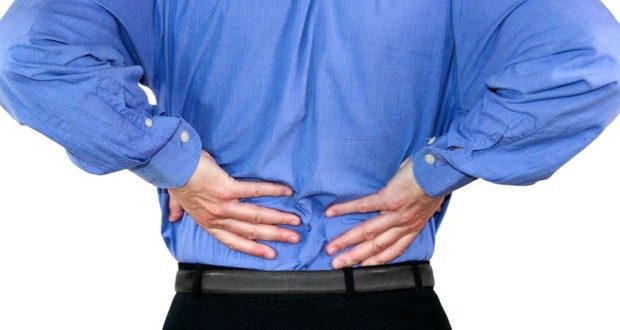When back pain flares up, it usually can be blamed on a certain group of culprits. Generally speaking, this problem is often attributed to injuries, poor posture or the presence of chronic conditions known for causing pain, such as osteoarthritis. While these issues are responsible for numerous bad backs, there are also some less-discussed reasons for the appearance of back pain. Some of these possible triggers are listed below:
Kidney Stones – Kidney stones form when various chemicals found in urine, such as calcium, oxalate, and phosphate, solidify inside the kidneys. Often times, these “pebbles” are too small to cause any trouble, and navigate the body unnoticed. Larger kidney stones, in contrast, can cause significant pain as they pass through the ureter tube, which links the kidney to the bladder (the human body has two ureters, one for each kidney). Kidney stones can cause back pain, as well as flare ups in the sides, ribs, abdomen and groin. Other symptoms include discolored urine, painful urination, nausea and vomiting.
If necessary, smaller kidney stones may be treated with pain medications. In addition, patients are often told to drink plenty of fluids until the stone passes. Some stones become so large that they get stuck in the ureter, and need to be either surgically removed or broken into smaller pieces with sound waves.
Gallstones – As its name would indicate, gallstones and kidney stones share some similarities. Like kidney stones, gallstones are pebble-like structures that form when other substances crystallize and harden. Instead of afflicting the kidneys, however, these stones instead develop in the gallbladder. Positioned underneath the liver, the gallbladder is tasked with storing the liver’s bile. It releases this fluid to assist the body as it digests food.
Another trait shared by both kidney stones and gallstones is that they are often asymptomatic. Of course, this isn’t always the case, as gallstones can be quite troublesome if they block the ducts connecting the gallbladder and liver to the intestines. Back pain is just one of many signs of a gallstone blockage, as the patient may also experience pain in the abdomen, chest and shoulder. Other symptoms include nausea, vomiting and bloating.
In most cases, gallstones that cause no discernable problems do not need medical treatment. If symptoms do appear, the patient may simply be told to monitor their health. Most people with persistent and significant gallstone pain are advised to have their gallbladder removed. Surgery isn’t the only treatment option, as some patients are instead given medications designed to break down and dissolve gallstones. Unfortunately, these medicines aren’t guaranteed to work, and may require months or even years to clear blockages.
Kidney Infections – Back pain can also result from an infection of the kidneys. Kidney infections develop when bacteria enters the urinary tract through the urethra, a tube used by the bladder to transport urine out of the body. This type of infection can cause a wide range of symptoms, including back pain, abdominal pain, fever, frequent urination and repeated urges to urinate. In addition, urinating might cause the patient to feel pain or a burning sensation, and the sides of the body might also become painful.
Patients with kidney infections are generally prescribed antibiotics, which tend to alleviate symptoms in a relatively short amount of time. Some patients recover more slowly than others, and may have to take antibiotic medications for over a week. People suffering from severe kidney infections are typically hospitalized, and might be given antibiotics intravenously.
Fibromyalgia – Fibromyalgia is a frustrating condition that burdens the body with constant pain. This illness can cause pain to flare up throughout the body, including in the neck, shoulders, arms, hips, legs and back. In addition to aching muscles, patients must also contend with a litany of other symptoms, such as anxiety, depression, fatigue, headaches and sleeping difficulties.
Although fibromyalgia cannot be cured, certain treatments may help control its symptoms to a certain degree. Patients are often treated with some combination of medicines, physical therapy, exercises and relaxation techniques.
 Natural Knowledge 24/7 Educate yourself with nutrition, health and fitness knowledge.
Natural Knowledge 24/7 Educate yourself with nutrition, health and fitness knowledge.






